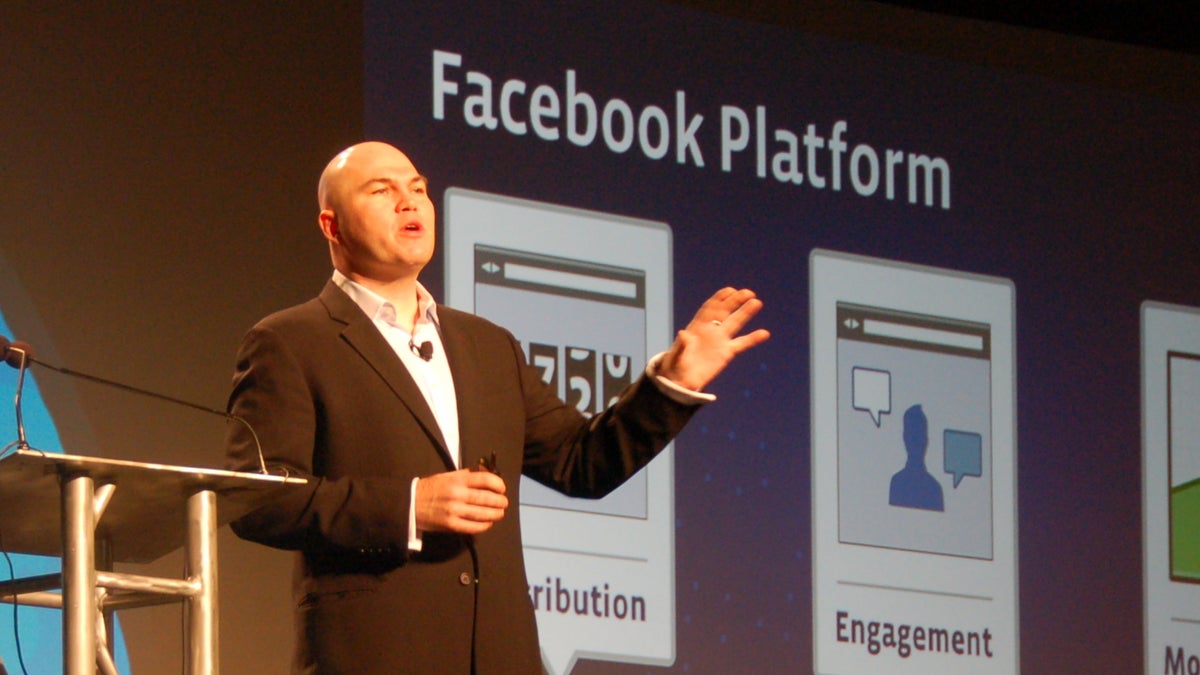Facebook, Nielsen to devs: Smartphones are your future
At the AppNation conference in San Francisco, Facebook and Nielsen execs roll out data to show why developers should be putting their eggs in mobile baskets.

SAN FRANCISCO--The U.S. is becoming a smartphone nation.
Today at the AppNation conference here, Doug Purdy, Facebook's director of developer relations, reminded the developers in the audience of the existence of the recently updated Facebook Platform for Mobile. Then, to emphasize the imperative for developers to focus on the mobile platform, he was followed by Jonathan Carson of Nielsen, who rolled out adoption figures that made it clear that the action in development has definitively moved to the mobile space.
Facebook: We're serious about mobile
While Facebook announced a platform for mobile in 2007 (see this blog post by Dave Morin, now CEO at Path; story), the update, according to Purdy, will make it easier for developers to get mobile apps in front of the 800 million Facebook users. Purdy said that 500 million of them use apps, 200 million use games, and that there are 20 million new apps installed every day.
Facebook is capturing the movement toward mobile, Purdy said, with enhanced capabilities in the mobile platform. "The most social thing you have is your phone," he said, and 350 million Facebook users are on the service from a mobile device. They are, he said, twice as likely to "re-engage" with apps, and become "high-engagement users."
The updated mobile platform will let users find mobile apps and will automatically bookmark apps that users add on all their platforms: the mobile apps and the traditional sites. "Write an app and you are instantly inside the platform," he said.
The platform, not surprisingly, encourages users to share apps with other users, but there is a revised security step before apps are added that lets users approve the permissions that the app is asking for in more granularity. It's not clear what will happen if you approve some private data requests and decline others, but this is a good move, since it means that accepting an app that a friend recommends is no longer an all-or-nothing decision when it comes to exposing your Facebook data.
Facebook mobile apps can be all in HTML5 or can be written in a mobile device's native environment. "It's not a question of 'or,'" he said, "It's 'and.'"
Purdy closed his mobile pitch for developers with this: "Your app goes from being something that people use to something that is part of who they are."
Nielsen: The emerging smartphone majority
Jonathan Carson, GM Digital at Nielsen, drove the importance of developing for mobile home after Purdy left the stage. His first data point: 44 percent of U.S. consumers carry smartphones, and we will soon have a majority of consumers on smartphones. Fifty-six percent of mobile handsets sold, he said, are smartphones. Trends in all other countries are similar.
And people using smartphones are actually using them to do what they were designed for. Using an (opt-in) scanning technology that some Android users have installed, Nielsen has determined that only 6 percent of use on Android devices is in the phone "dialer." Nine percent is in the browser, 14 percent is in SMS. The rest, over half of use, is in apps.
And there is opportunity in the app space still. While on Android, five out of six of the top apps are Google's (the other is Facebook), and while half of the app use on Android devices is in the top 50 apps, the relative positions on that leaderboard are dynamic.
Carson said that fewer than half the apps stay within 3 places of their position month to month, and that apps enter and leave the top 50 board frequently.
Compared to the top TV shows or Web sites (which Nielsen also tracks), there's just a lot more change in the popularity of top products. The space is a big opportunity.
Nielsen also tracks when people use apps, and notes that "prime time" on smartphones is all day long. "This is a really big deal," Carson said. App usage peaks in the late morning and stays high all through the evening. It's quite unlike TV, and represents a wide open space for developers, content providers, advertisers, and anyone tapped into the mobile economy.

